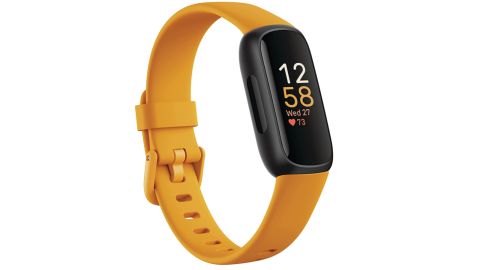[ad_1]
Between the recently launched Apple Watch Series 8 and Google’s long-awaited Google Pixel Watch (finally), smartwatches are all the rage. But if you’re not in the market to replace your current watch and feel more comfortable with a lower-priced, less complicated activity tracker, the Fitbit Inspire 3 — the follow-up to our longstanding best fitness tracker pick — may be a more relevant choice.
Fitbit recently refreshed its line of popular fitness trackers, and I’ve been testing the small but mighty Inspire 3, which now features a color display and 10-day battery life and sells for under $100. Not only is it affordable, but it’s also smaller and lighter than most smartwatches and many comparable fitness bands.
I’ve been walking around and working out with the Fitbit Inspire 3 for over a month, and despite some minor issues, I find that it tracks everything I need, including steps, distance, calories, heart rate, sleep and much more. Though it’s not a smartwatch, it’s crafty enough to deliver notifications from my phone via Bluetooth so I just can glance at my wrist to check a text or see who’s calling.
The Fitbit Inspire 3 is the best fitness tracker for most people, offering comprehensive tracking, a vivid color display and a comfortable fit for less than $100.
I’ve been using and reviewing Fitbit activity trackers since the first one debuted in 2009 — and that includes everything from the basic models to the more complex smartwatch models. The refreshed Inspire 3 is small enough to stay out of my way, comes with loads of features and at $99, will fit in most budgets. Compatible with Android and iOS smartphones, the band is available in three color options: Midnight Zen (dark gray), Morning Glow (orange) and Lilac Bliss (light purple) and comes with two different sized flexible silicon straps. Optional accessories include a handsome stainless steel mesh band, if you want to jazz it up.
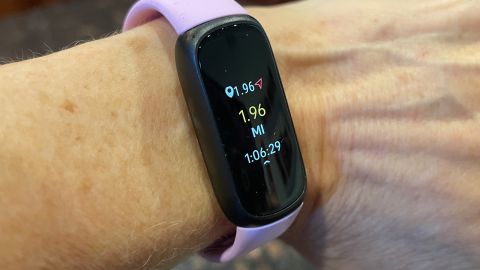
The first thing you notice about the Fitbit Inspire 3 is the bright, color AMOLED screen, replacing the monochrome screen on the Inspire 2. Not only does this new screen make the tracker more appealing to look at, but it’s also easier to see your information in bright sunlight. Smaller and narrower than my current Fitbit Charge 4, its pebble-shape design is wrapped in a svelte 1.55-inch case.
You access info the same way: tapping and swiping through the menus. Swipe left for notifications, exercises, alarms and timers. Swipe up for settings and down for daily health stats. I found the screen to be generally responsive, though there were a few times I had to swipe more than once to get its attention.
The new model does come with an always-on display capability, but be warned: It will drain your tracker’s battery much faster than the 10 days of battery life the Inspire 3 boasts. Without this feature, I got about 11 days of battery life on a single charge. With an always-on screen, Fitbit says you’ll get about three days.
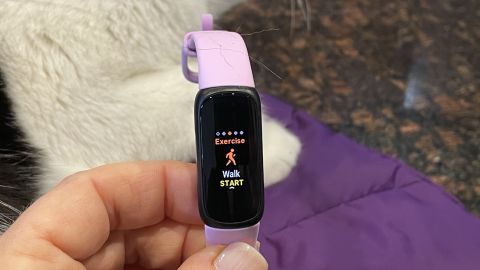
Activity tracking is what Fitbit does best, and the Inspire 3 makes it easy. There are over 20 different workouts to choose from (including run, bike, swim and treadmill), though you can only have six workouts on your tracker at once. To swap them out you need to connect to the app, make your changes and re-sync the device.
The Inspire 3 also uses what it calls Active Zone Minutes to help you better reach your workout goals. It monitors your heart rate and tracks how much time you spend in certain zones, taking age and fitness level into account. When I walk in the morning, I usually stay at a steady pace. However, if I speed up or run, it will change from “fat burning” to “cardio zone” to give me Active Zone Minutes.
All this is done in the background while it also tracks your distance, calories burned, number of steps, time elapsed and heart rate. When you finish a workout, you can see all the data on your wrist, or check it in the app once you sync.
The Inspire 3’s new health monitoring features make it a compelling health tracker in addition to a fitness tracker. It automatically tracks Sp02 (blood oxygen) levels throughout the day, and while it can’t take an ECG like the more expensive Fitbit Charge 5 or newer smartwatches, it will monitor your heart rate and alert you if it detects an irregular heart rhythm.
Once it syncs with the Fitbit app, you can access all this data and drill down for more info or timelines. In the app you can also manually track menstruation and blood glucose levels, and view historical data.
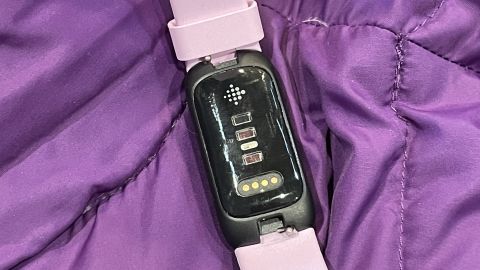
Though the Inspire 3 is Fitbit’s entry-level tracker, it still offers the company’s comprehensive sleep tracking abilities. I’m not a huge fan of wearing a tracker to bed, but the silicon band and small size made it lightweight and comfortable enough to give it a try.
Fitbit recommends wearing it for 14 nights to get an in-depth sleep profile, but even after a few nights I was able to see how much deep and REM sleep I get compared to light and restless sleep. It also tracks resting heart rate, sleep duration and blood oxygen levels, so the trends in the data will give you a good sense of your sleep profile
Sure, the Inspire 3 tracks and makes it easy to see your health and fitness stats, but if you decide to splurge for a Fitbit Premium subscription, you’ll have access to more in-depth health metrics and trends as well as premium workout challenges.
The Daily Readiness score looks at your sleep, heart rate and activity data to help you better listen to your body. Did you get a good night’s rest? Maybe you’ll want to push yourself a little harder today. On the other hand, a low readiness score means your body is wiped out and you might want to take a recovery day. For instance, one morning it recommended I do a light walk or stretching instead of a tougher workout, which I readily accepted.
The Sleep Score provides deeper insights about your sleep quality (how much you slept, how much time in deep and REM sleep) and recovery patterns. There are also stress management tools and health and wellness reports to dig into.
Premium members can see a minute breakdown of their stress score, including exertion balance, responsiveness and sleep patterns. I especially liked that it showed how my body responds to stress over longer periods of time, and sometimes even suggested I consider a quick meditation or taking a break with the Relax app, which walked me through a guided breathing session.
You don’t need a Premium subscription to benefit from the Inspire 3 tracker, but if you want to better understand how your overall activity, heart rate and sleep affects your body, it’s worth a try. Your tracker comes with six months free, so if you want to keep it after that, you’ll be subsequently charged either $9.99 per month or $79.99 for a year.
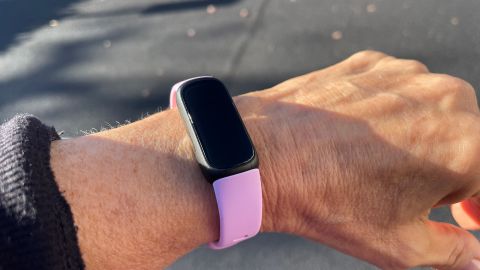
Though I like that the Inspire 3 is compact and the color screen is one of its best new features, some users might find it a little too small. Because I wear reading glasses, I had a more difficult time grabbing a quick glance at a text message or reading my heart rate during a workout. It’s possible to change the clock faces to make the date and time larger, but once it was tracking an activity, it was still hard for me to see clearly.
I also wanted to be able to track an activity and see the time, which I can currently do on my Charge 4. Yet, once you start tracking an exercise on the Inspire 3, you no longer have access to the home screen. You can scroll through the screens, past things like pace, heart rate, steps and calories, but even then you’ll only find the time as a small data point. This took too many steps and was hard to read while I was trying to keep a faster pace.
Currently, the message that pops up when you finish an exercise says “Nice work!” every single time. I may be getting nitpicky, but I wouldn’t mind if it was a little more discerning. When I’ve gone on my three-mile course, I’ll take it, but if I only work out for 10 minutes, falling short of my usual routine, it would be OK if it said something more like “Nice try.”
And while I’m being picky, it would be great if the message that pops up when you finish an exercise would be a little more discerning. Currently, it says “Nice work!” every single time. When I’ve gone on my 3-mile course, I’ll take it, but if I only work out for 10 minutes, falling short of my usual routine, it would be OK if it said something more like “Nice try.”
The Fitbit Inspire 2’s slim design, ease of use and comprehensive health and activity tracking features topped our best fitness trackers list, so it’s no surprise that the updated Inspire 3 builds on that. For $99 you won’t find a more comprehensive, feature-rich entry-level device.
There are other activity trackers at this price point that have similar metrics, like the $80 Garmin Vivofit 4 — we particularly liked that this one uses a button to help navigate the menu. However, we also found the Garmin app and interface clunky and more difficult to navigate.
The data and insights the Fitbit app itself has to offer are comprehensive, so if you want a device with more features, Fitbit has a few options.
The Fitbit Charge 5 comes with a slightly larger screen but will cost about $50 more at $150. It’s not as sleek-looking but has higher-end features like built-in GPS and Spotify integration so you don’t have to take your phone with you when you’re out running. It also has the ECG app for heart rhythm assessment and offers seven days of battery life. For $129, the Fitbit Luxe has the same features and performance as the Inspire 3 but adds a gold case. The Luxe has about five days of battery life.
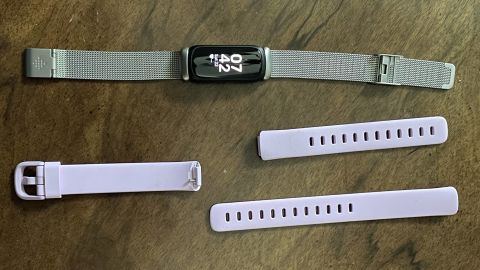
With its entry-level price tag, the Inspire 3 lacks the smarts of a more expensive device. There’s no built-in GPS (though you can use your phone’s GPS to track a run via Bluetooth) and no contactless payments or built-in music service like Spotify.
But, If you’re looking for an easy-to-use, feature-rich tracker with battery life that will go for days, the Fitbit Inspire 3 with its color screen and 10-day battery life leads the pack. You also get useful features like stress management, two-minute relaxation sessions, reminders to get up and move and the “find my phone” feature for when you misplace your phone in the house. And, at under $100, it’s affordable, comfortable enough to wear all day and night and gives you access to meaningful data in its comprehensive Fitbit app.
[ad_2]

